Descripción general
Esta guía explica cómo configurar notificaciones push en su aplicación Angular usando el paqueteonesignal-ngx, cubriendo todo desde la instalación hasta la configuración y gestión de service workers.
Requisitos
- Aplicación y plataforma de OneSignal configuradas. Consulte Configuración de Web Push para comenzar.
Instalación
Instale el paqueteonesignal-ngx usando su administrador de paquetes preferido:
Inicialización
Importe el servicio de OneSignal e inicialícelo en su componente raíz:Esperar la inicialización
Puede manejar la promesa devuelta porinit() de dos maneras:
Personalizar opciones de inicialización
Puede personalizar su inicialización con parámetrosinit adicionales.
Configuración del Service Worker
Para evitar conflictos con el propio service worker de Angular (usado en configuraciones PWA), especifique un alcance y ruta únicos para el service worker de OneSignal. Si aún no lo ha hecho, necesitará descargar el archivo Service Worker de OneSignal para agregarlo a su sitio. El archivoOneSignalSDKWorker.js debe ser públicamente accesible. Puede colocarlo en su directorio public, raíz de nivel superior o un subdirectorio. Sin embargo, si está colocando el archivo en un subdirectorio y/o tiene otro service worker para su sitio, asegúrese de especificar la ruta. Consulte OneSignal Service Worker para más detalles.
| Opción | Descripción |
|---|---|
serviceWorkerParam | Alcance controlado por el worker de OneSignal. Recomendación: Use una subruta personalizada (por ejemplo, "/onesignal/"). |
serviceWorkerPath | Ruta a su archivo de service worker de OneSignal alojado (por ejemplo, "onesignal/OneSignalSDKWorker.js"). Debe ser públicamente accesible. |
Alojar el worker
- Raíz pública (predeterminado):
/OneSignalSDKWorker.js - Carpeta personalizada (recomendado): por ejemplo,
/onesignal/OneSignalSDKWorker.jscomo se establece en el paso anterior.
Verificar alojamiento del service worker
Visite la ruta en su navegador para confirmar que es accesible. Si usó la raíz:Importante para usuarios de Angular CLI
Si el archivo no se está sirviendo, asegúrese de que esté listado en suangular.json bajo el array assets:
Notas importantes
- Evitar inicialización duplicada en desarrollo
- Al probar en un entorno de desarrollo, podría ver que el SDK de OneSignal se inicializa dos veces, lo que puede causar errores de consola.
- Esto sucede debido a que
<React.StrictMode>hace que los efectos se ejecuten dos veces en desarrollo. Para resolverlo, elimine<React.StrictMode>de su componente raíz durante el desarrollo.
Testing the OneSignal SDK integration
This guide helps you verify that your OneSignal SDK integration is working correctly by testing push notifications and subscription registration.Check web push subscriptions
Launch your site on a test device.
- Use Chrome, Firefox, Edge, or Safari while testing.
- Do not use Incognito or private browsing mode. Users cannot subscribe to push notifications in these modes.
- The prompts should appear based on your permission prompts configuration.
- Click Allow on the native prompt to subscribe to push notifications.
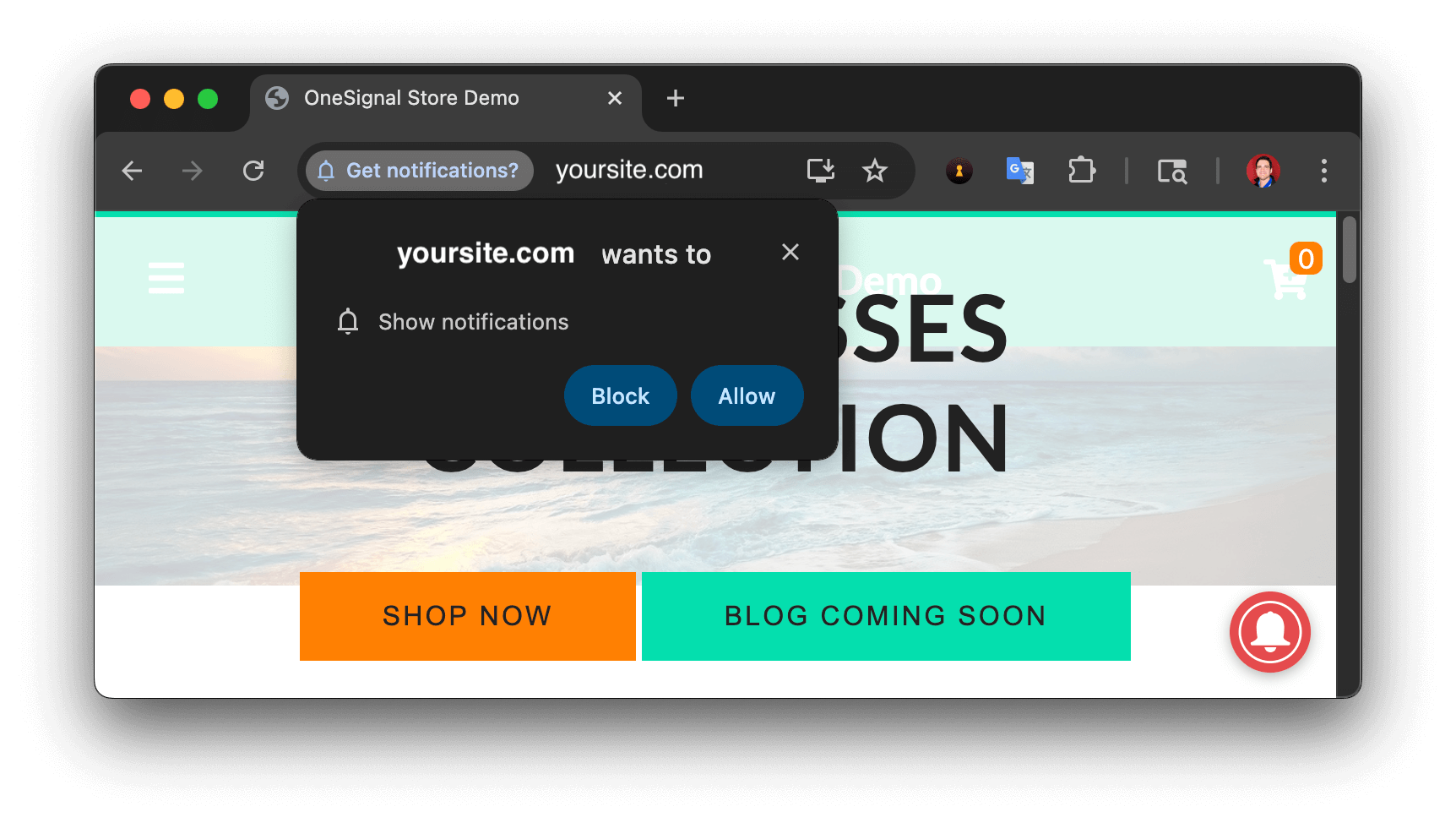
Web push native permission prompt
Check your OneSignal dashboard
- Go to Audience > Subscriptions.
- You should see a new entry with the status Subscribed.

Dashboard showing subscription with 'Subscribed' status
Set up test subscriptions
Test subscriptions are helpful for testing a push notification before sending a message.Add to Test Subscriptions.
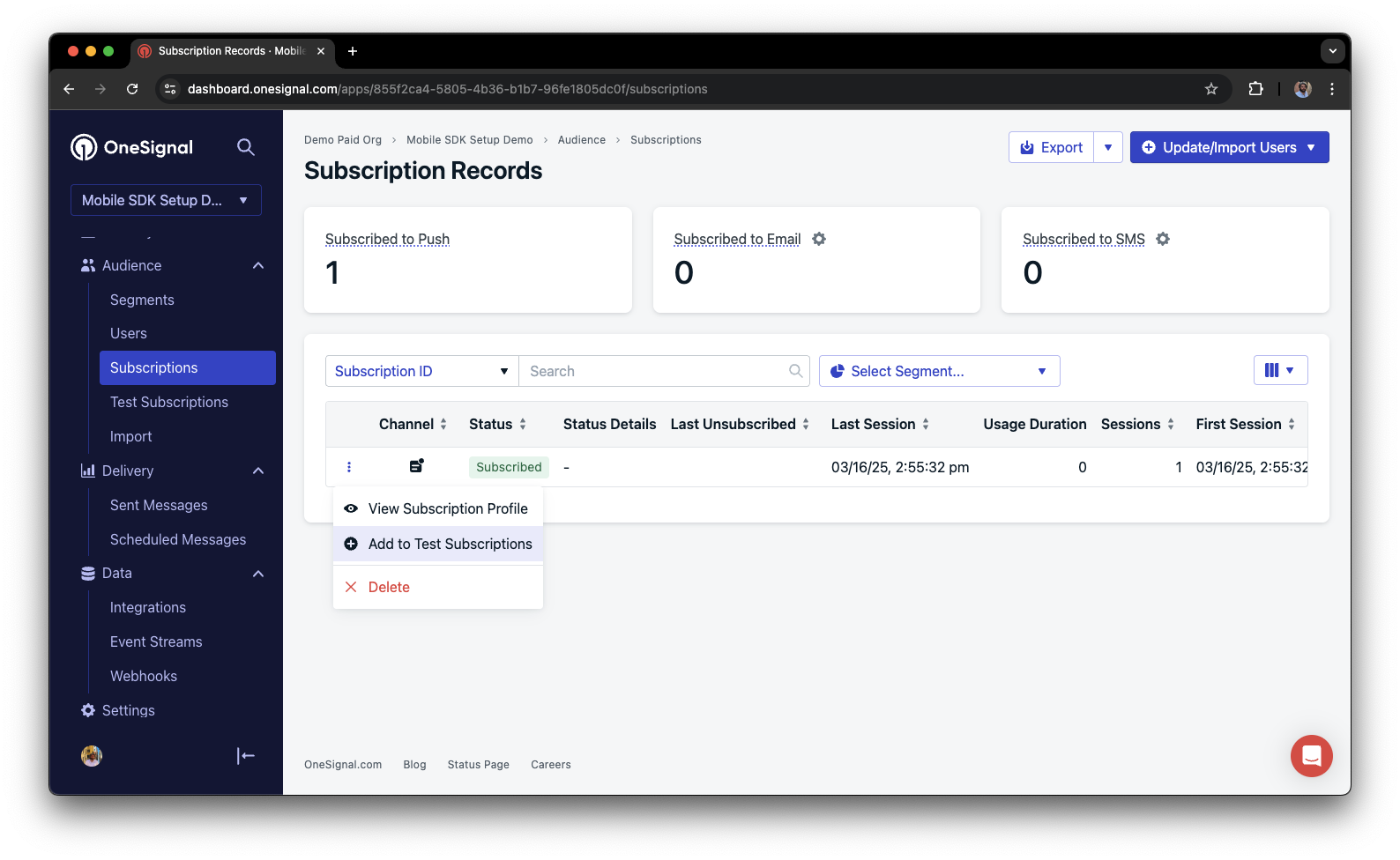
Adding a device to Test Subscriptions
Name your subscription.
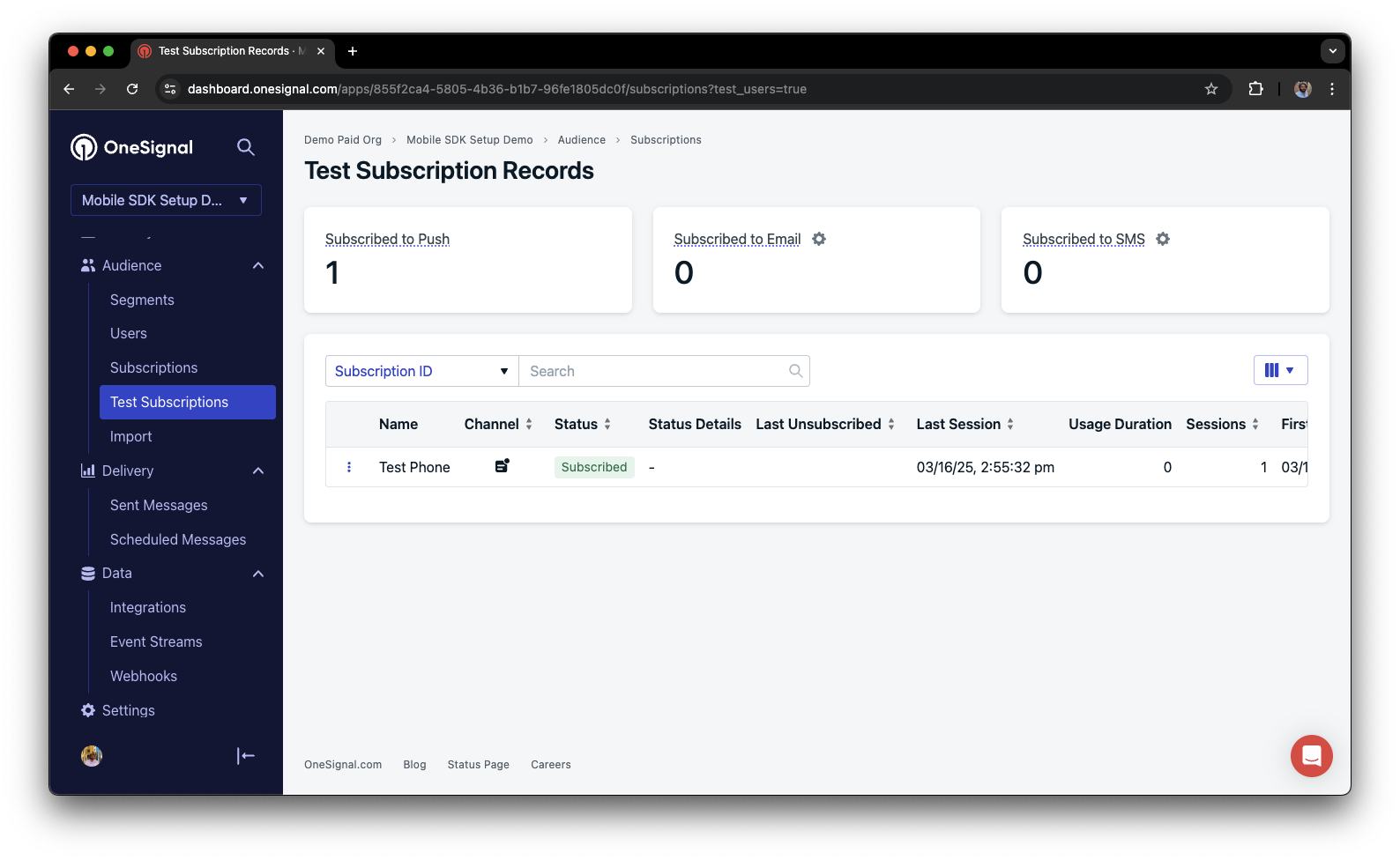
Dashboard showing the 'Name your subscription' field
Create a test users segment.
Name the segment.
Test Users (the name is important because it will be used later).Add the Test Users filter and click Create Segment.
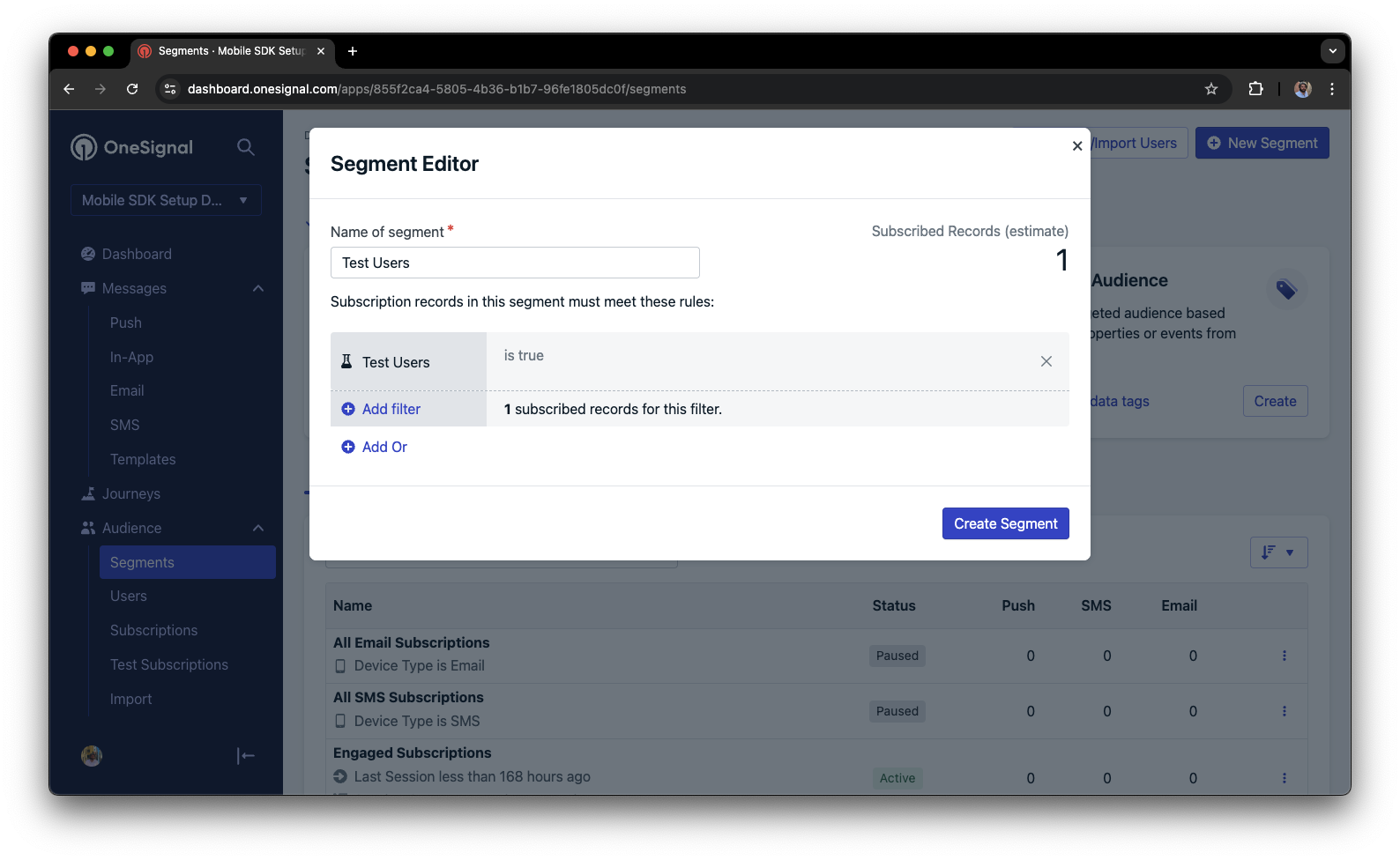
Creating a 'Test Users' segment with the Test Users filter
Send test push via API
Get your App API Key and App ID.
Update the provided code.
YOUR_APP_API_KEY and YOUR_APP_ID in the code below with your actual keys. This code uses the Test Users segment we created earlier.Run the code.
Check images and confirmed delivery.

Expanded push notification with image on Chrome macOS
Check for confirmed delivery.
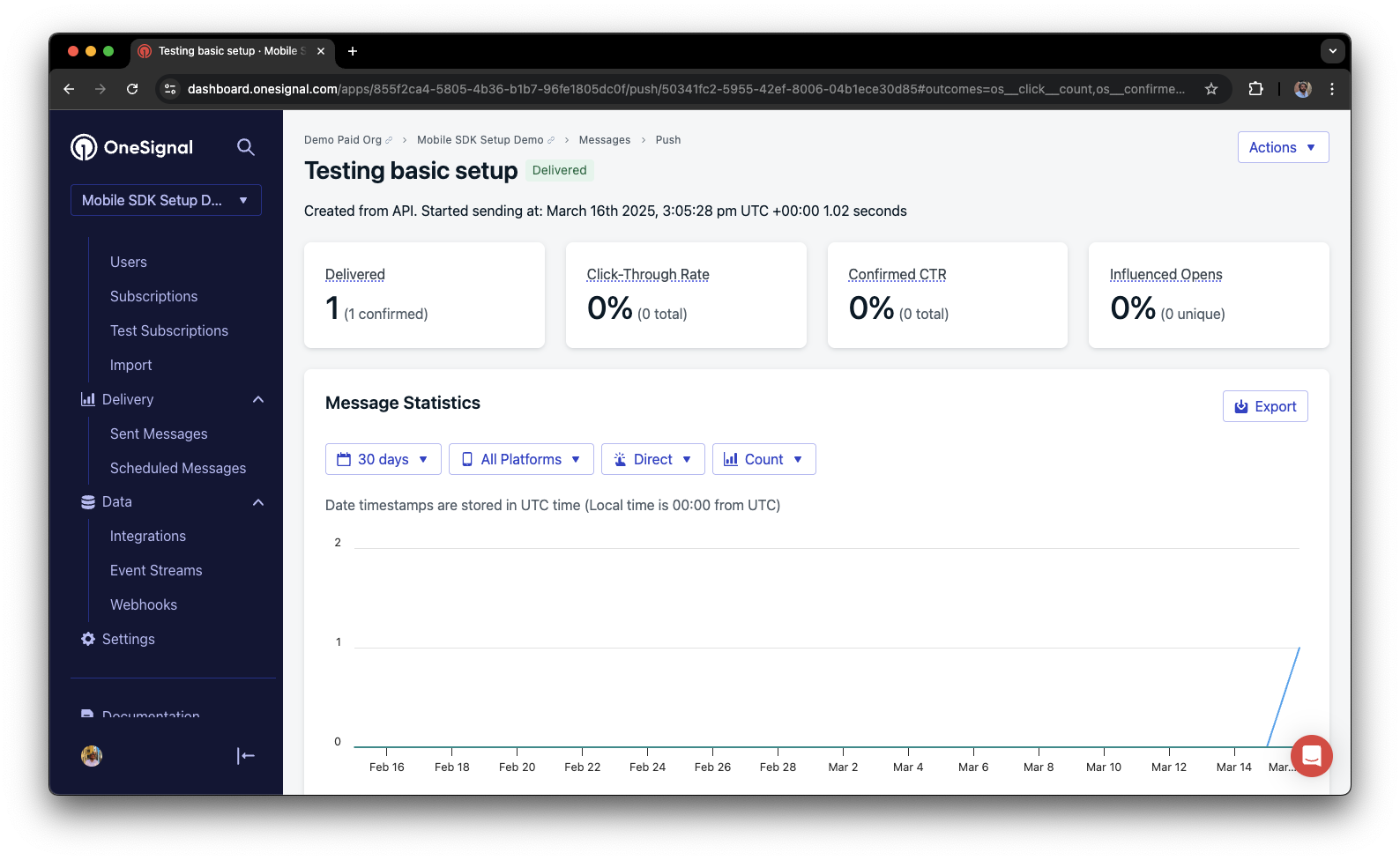
Delivery stats showing confirmed delivery
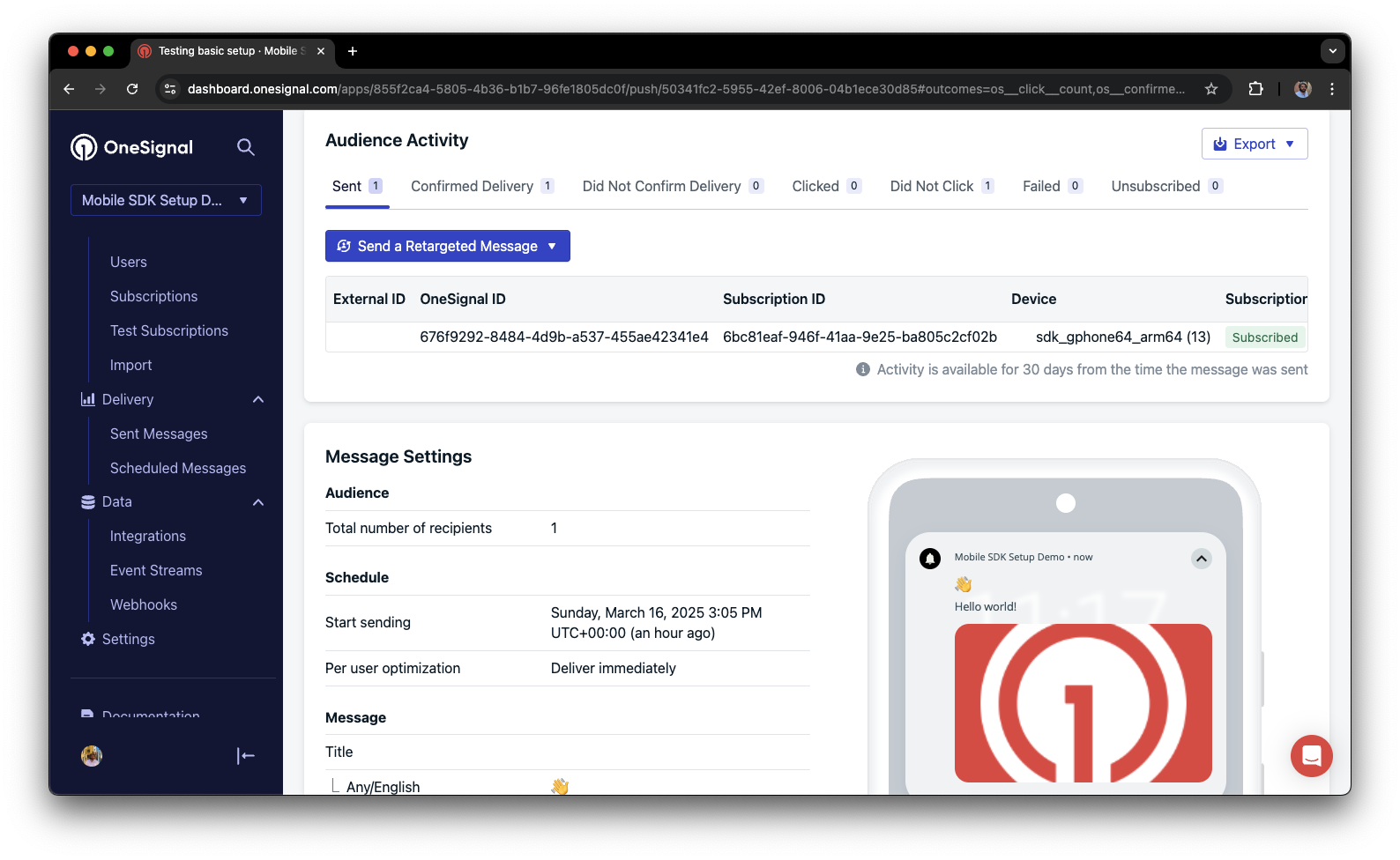
Confirmed delivery at the device level in Audience Activity
User identification
Previously, we demonstrated how to create web push Subscriptions. Now we’ll expand to identifying Users across all their subscriptions (including push, email, and SMS) using the OneSignal SDK. We’ll cover External IDs, tags, multi-channel subscriptions, privacy, and event tracking to help you unify and engage users across platforms.Assign External ID
Use an External ID to identify users consistently across devices, email addresses, and phone numbers using your backend’s user identifier. This ensures your messaging stays unified across channels and 3rd party systems (especially important for Integrations). Set the External ID with our SDK’slogin method each time they are identified by your app.
Add data tags
Tags are key-value pairs of string data you can use to store user properties (likeusername, role, or preferences) and events (like purchase_date, game_level, or user interactions). Tags power advanced Message Personalization and Segmentation allowing for more advanced use cases.
Set tags with our SDK addTag and addTags methods as events occur in your app.
In this example, the user reached level 6 identifiable by the tag called current_level set to a value of 6.
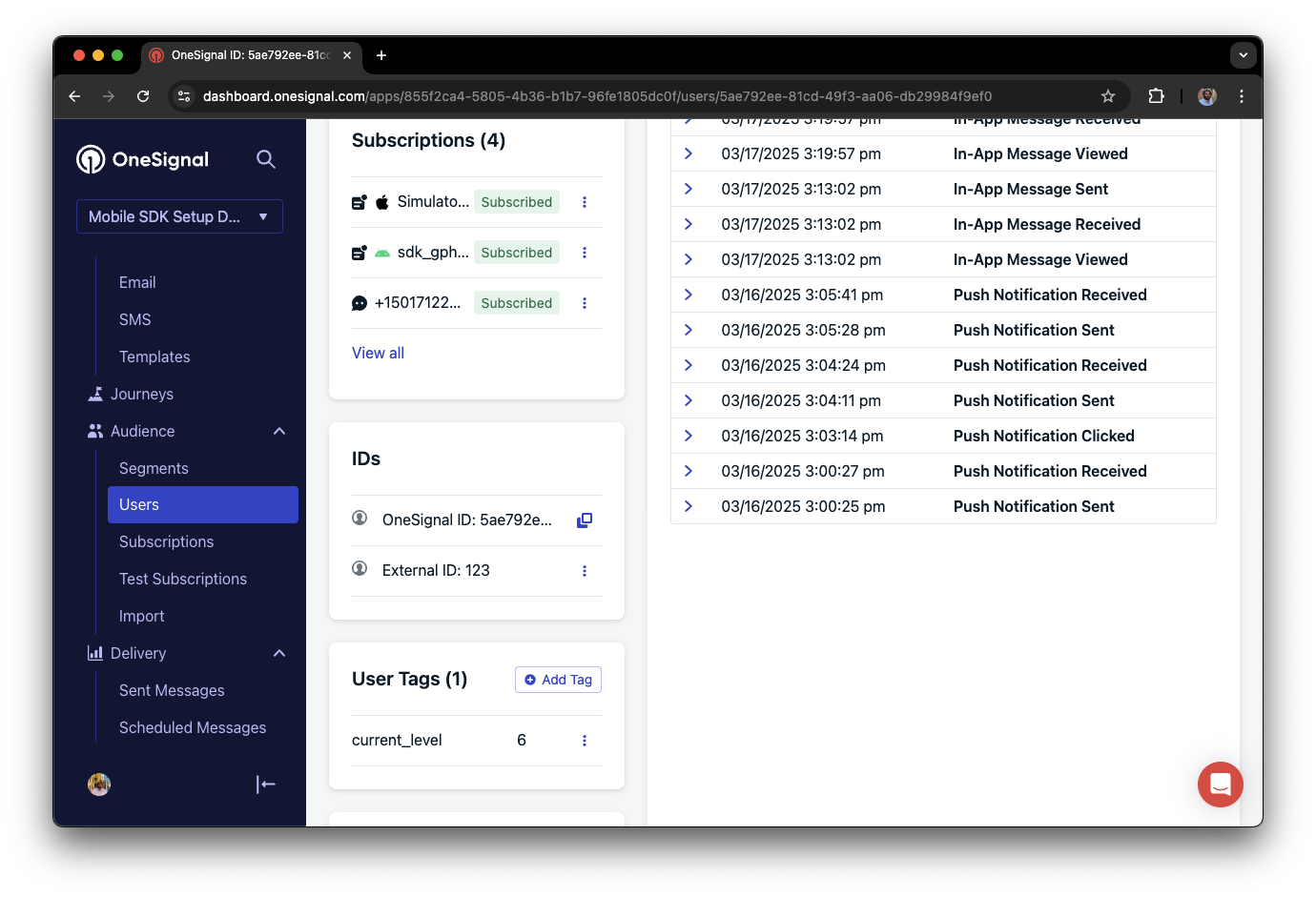
A user profile in OneSignal with a tag called "current_level" set to "6"

Segment editor showing a segment targeting users with a current_level value of greater than 4 and less than 10

Screenshot showing a push notification targeting the Level 5-10 segment with a personalized message
Add email and/or SMS subscriptions
Earlier we saw how our SDK creates web push subscriptions to send push. You can also reach users through emails and SMS channels by creating the corresponding subscriptions.- Use the
addEmailmethod to create email subscriptions. - Use the
addSmsmethod to create SMS subscriptions.
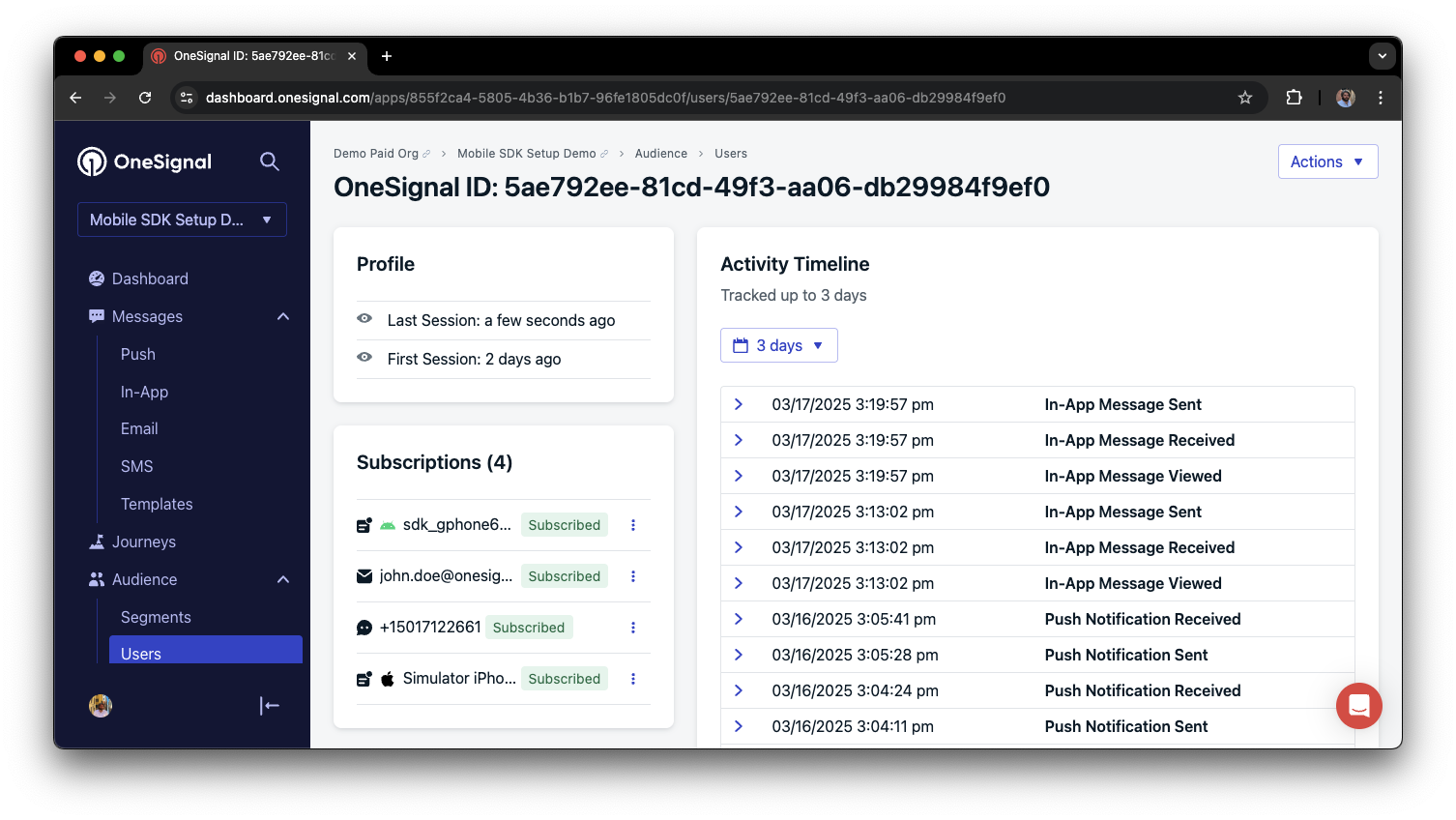
A user profile with push, email, and SMS subscriptions unified by External ID
- Obtain explicit consent before adding email or SMS subscriptions.
- Explain the benefits of each communication channel to users.
- Provide channel preferences so users can select which channels they prefer.
Privacy & user consent
To control when OneSignal collects user data, use the SDK’s consent gating methods:setConsentRequired(true): Prevents data collection until consent is given.setConsentGiven(true): Enables data collection once consent is granted.
Listen to push, user, and in-app events
Use SDK listeners to react to user actions and state changes. The SDK provides several event listeners for you to hook into. See our SDK reference guide for more details.Push notification events
- Click event listener: Detect when a notification is tapped.
- Foreground lifecycle listener: Control how notifications behave in foreground.
User state changes
- User state change event listener: Detect when the External ID is set.
- Permission observer: Track the user’s specific interaction with the native push permission prompt.
- Push subscription change observer: Track when the push subscription status changes.
Advanced setup & capabilities
Explore more capabilities to enhance your integration:- 🔁 Migrating to OneSignal from another service
- 🔌 Integrations
- 🛎️ Action buttons
- 🌐 Multi-language messaging
- 🛡️ Identity Verification
- 📊 Custom Outcomes
Web SDK setup & reference
Make sure you’ve enabled all key features by reviewing the Web push setup guide. For full details on available methods and configuration options, visit the Web SDK reference.[email protected]Please include:- Details of the issue you’re experiencing and steps to reproduce if available
- Your OneSignal App ID
- The External ID or Subscription ID if applicable
- The URL to the message you tested in the OneSignal Dashboard if applicable
- Any relevant logs or error messages